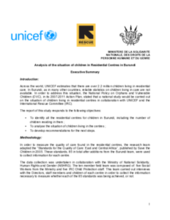Demographic Data
|
Sources: World Bank, UNDP, UNAIDS, DHS 2013 |
Displaying 12951 - 12960 of 14389
This paper highlights a number of recurrent issues that help to illuminate and explain the differences that persist between France and Germany in spite of recent reform efforts in child & family policies and evaluates the success of these policies and whether they have achieved their desired effects on mothers' employment patterns, especially those of qualified female workers.
Parental leave and early childhood education and care have gained a high profile in child and family policy fields, and both have been the subject of substantial cross-national mapping, describing and comparing their main features across a range of countries. This article provides overviews on parental leave and early childhood services in affluent countries, and reflections on this mapping.
This study explores the development of “state of the child” reports between 2000 and 2010 in an effort to not only quantify the development but also to understand the shifts and changes in the field.
The papers collected in this issue provide a contemporary perspective on comparative child and family policy, highlighting new developments and current challenges for research and policy.
Child care and early education policies may not only raise average achievement but may also be of special benefit for less advantaged children, in particular if programs are high quality. We test whether high quality child care is equalizing using rich longitudinal data from two comparison countries, Denmark and the United States.
A comparative analysis of child welfare systems in 10 countries identifies three broad functional orientations – child protection, family service and child development.
In order to commemorate the two year anniversary of the resolution of the Alternative Care Guidelines, discuss the use and implementation of the Guidelines, and raise the profile of the importance of this international framework, the Permanent Mission of Brazil to the United Nations, in partnership with the Better Care Network, UNICEF, SOS and the NGO Committee on UNICEF Working Group on Children without Parental Care, held side-event during the UN Social, Humanitarian Cultural Affairs Committee of the UN General Assembly.
The report of this study responds to the objectives of identifying all the residential centres for children in Burundi, including the number of children residing in them; analysing the situation of children living in the centres and developing recommendations for the next steps
This Resource Guide aims to be a user-friendly and manageable document designed to provide an overview of the current system strengthening approaches, along with a series of resources and tools available to support systems strengthening in child protection.
Les intervenants à l'événement marquant le deuxième anniversaire des Lignes directrices relatives à la protection de remplacement pour les enfants, ont discuté des voies à suivre pour aller plus loin dans la mise en oeuvre de ces Directives et exhorte la communauté internationale à améliorer la qualité et les normes relatives à la protection des enfants vulnérables.


